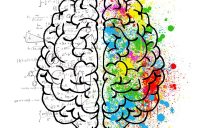A house of cards is unstable and flimsy by nature. There is a lack of stable foundation, and the arrangement leans heavily on each and every piece. Eventually, it will give out under its own weight – and that’s if something doesn’t knock it over first.
Many government IT systems are built like a house of cards, hastily arranged in a structure that’s just waiting to topple. Of course, governments have tried to innovate, but the limits of budgets have prevented wholesale changes. Instead, when a system – or a card in the above example – begins to slip or give way, it is replaced with a newer, stronger card. The problem is delayed but not prevented, and the system remains unchanged and unimproved.
Now, governments have a new opportunity. Open source technology and developments allow governments of all sizes to launch applications that can immediately provide business returns, communicate with one another and field tailored, innovative solutions.
“It’s about making sure that your constituents and stakeholders are getting value through the work your agencies are doing,” David Cohn, Middleware Solutions Sales Specialist for Red Hat, said. Cohn spoke during GovLoop’s “Gov Innovators Virtual Summit” Wednesday about how open source technologies are changing the way that agencies can innovate and update their systems.
Modernization and innovation might sound similar, but there is no small difference between investing in new technologies and catching old ones up to date.
“You need to update your existing technology, but you need to innovate – and innovate fast,” Cohn said
While open source has been around for a while, cloud environments have opened up new opportunities for agencies to ignite full-scale innovation at agencies. Agencies can now accomplish both modernization and innovation.
Linux houses containers – which can package code, dependencies and configurations into one location – allowing for open source work to be consistently maintained no matter the device or system. Containers can open up a world of hybrid cloud and multicloud environments, since they allow for users to collaborate in a consistent format.
“That’s where containers come in, so that you build it once and it works anywhere,” Cohn said.
Kubernetes, however, is changing what containers can do, by providing a platform for container orchestration.
With Kubernetes, agencies can manage their containers securely and at scale. Therefore, IT operations can integrate with one another and hybrid cloud becomes a feasible solution for agencies.
“Kubernetes basically has won the container orchestration war,” Cohn said.
Enterprise Kubernetes, like Red Hat’s OpenShift, provides security and application deployment on top of the open source features, preventing possible security flaws and continuous redeployments for hiccups in the integration.
Cohn said that open source creates collaborative projects, but that enterprise open source enabled clean, effective products.
Open source technologies continue to grow in the cloud era, as well. There’s even more than Kubernetes and Linux as people enter the realm of microservices and Istio. Microservices are even more finely detailed services that in turn operate as an application.
Regardless of the type of open source technology being used, all parties need to be on board with the mindset – one of collaboration and Agile, or DevOps, processes. While the technology is important, a healthy mindset and culture are just as key to digital transformation, Cohn said.
Paired with the right mindset, open source can promote instantaneous collaboration and return immediate results, solving traditional government challenges of delays and silos. The end results are seamless and informed systems.
More information about future GovLoop summits can be found here. In the meantime, read more content about innovation below.






Leave a Reply
You must be logged in to post a comment.